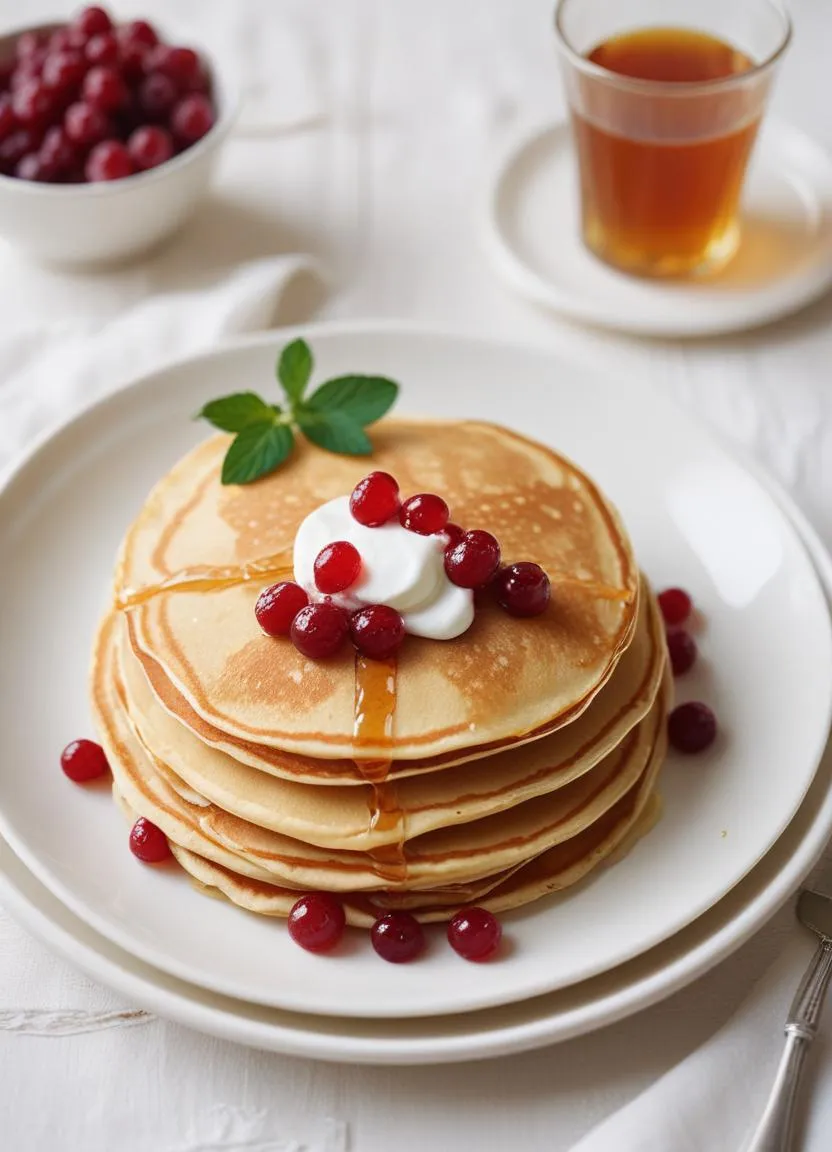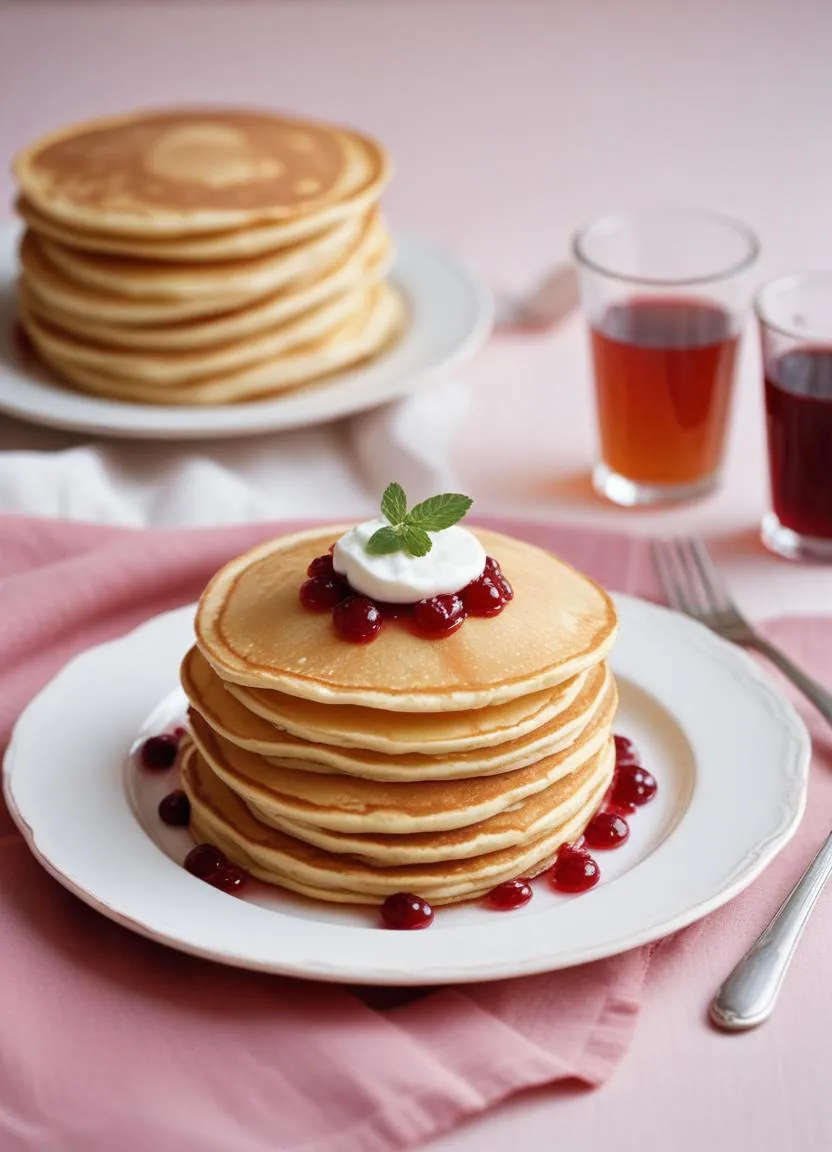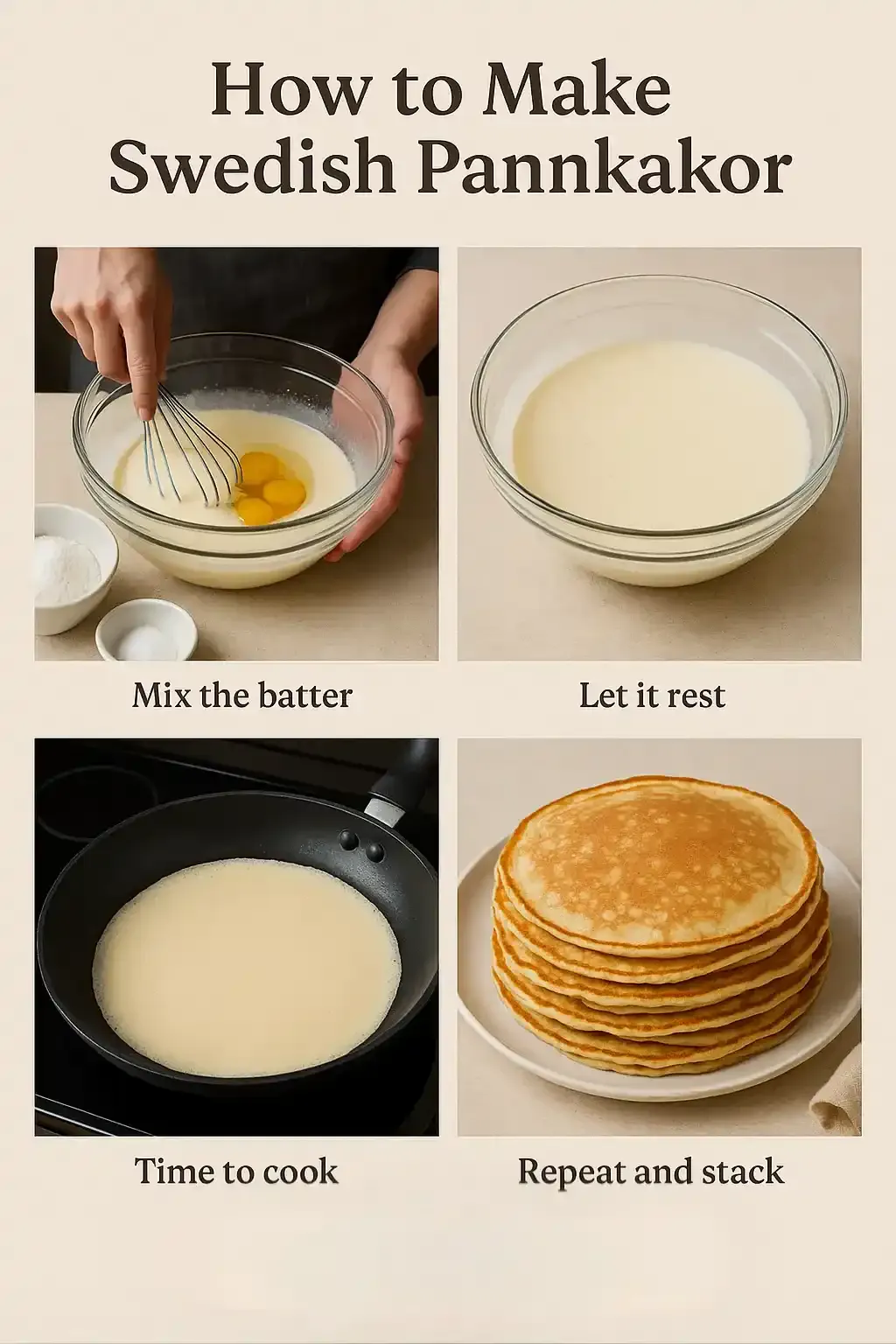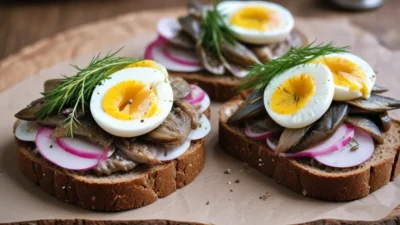Contents
Swedish pannkakor are delicate, thin pancakes that have been a cherished part of Sweden’s culinary tradition for centuries. Served often after pea soup or enjoyed sweet with jam and cream, these pancakes are simple to make yet deeply comforting. Whether rolled with savory fillings or topped with lingonberry jam, pannkakor embody the Swedish love for cozy, homemade food and the cultural ritual of fika. This article explores their history, recipe, and ways to enjoy them authentically at home.
Ingredients
- 2 cups whole milk
- 1¼ cups all-purpose flour
- 3 eggs
- 2 tbsp unsalted butter, melted plus more for frying
- ½ tsp salt
- 1 tbsp sugar optional
Instructions
- In a large bowl, whisk together the eggs and milk until combined.

- In another bowl, mix the flour, salt, and sugar (if using). Gradually pour the wet ingredients into the dry ingredients, whisking continuously to avoid lumps.
- Stir in the melted butter. Let the batter rest for 20–30 minutes at room temperature.
- Heat a non-stick pan over medium heat and lightly grease it with butter.
- Pour a small ladle of batter (about 60–70 ml) into the pan, tilting it to spread the batter thinly and evenly.
- Cook for 1–2 minutes until the edges turn golden and the pancake can be flipped easily. Flip and cook for another minute on the other side.
- Transfer to a plate and keep warm under a towel. Repeat until all batter is used.
Notes
Swedish pannkakor: soft, golden pancakes full of tradition and comfort 🥞
When it comes to simple pleasures, few things come close to a warm plate of Swedish pannkakor. These thin pancakes aren’t just a breakfast food or a dessert — they’re part of a rhythm of life in Sweden. Whether served after a bowl of hearty pea soup or enjoyed with jam on a lazy weekend morning, pannkakor have a special place in Swedish hearts (and kitchens). 🇸🇪
A weekly ritual with roots in the past 📜
In Sweden, Thursdays used to mean something specific on the dinner table: pea soup followed by pancakes. This isn’t just an old habit — it’s a tradition that goes back hundreds of years. It made sense: the soup was filling and cheap, and the pancakes were a little reward at the end. Even now, this tradition holds on. It’s not unusual for schools or homes to keep the “soup and pancakes” combo alive. It’s comforting, it’s familiar, and it connects people to the past in a very real way.What makes them different? 🤔
If you’ve ever had thick American-style pancakes or wafer-thin French crêpes, pannkakor land somewhere in between. They’re soft and delicate, but not flimsy. You can roll them, fold them, stuff them — or just eat them straight off the pan with a spoonful of jam. And the best part? They’re surprisingly easy to make.A mini version? Meet plättar 🍽️
Swedes also make tiny pancakes called plättar, using a special griddle with shallow circles. Kids love them, and they’re great for parties or fika breaks. Same batter, just smaller and a bit crispier around the edges.A fika favorite ☕
Speaking of fika — Sweden’s beloved coffee break — pannkakor fit right in. They’re light enough not to weigh you down, but satisfying enough to make you pause and savor the moment. A warm pancake, a hot cup of coffee, and maybe a little conversation? That’s the Swedish way.






This sounds amazing! I’m excited to try making Swedish pannkakor. My only question is, the recipe starts with milk and flour – should I whisk those together first before adding the eggs and melted butter? I want to make sure I get that perfect thin pancake texture!